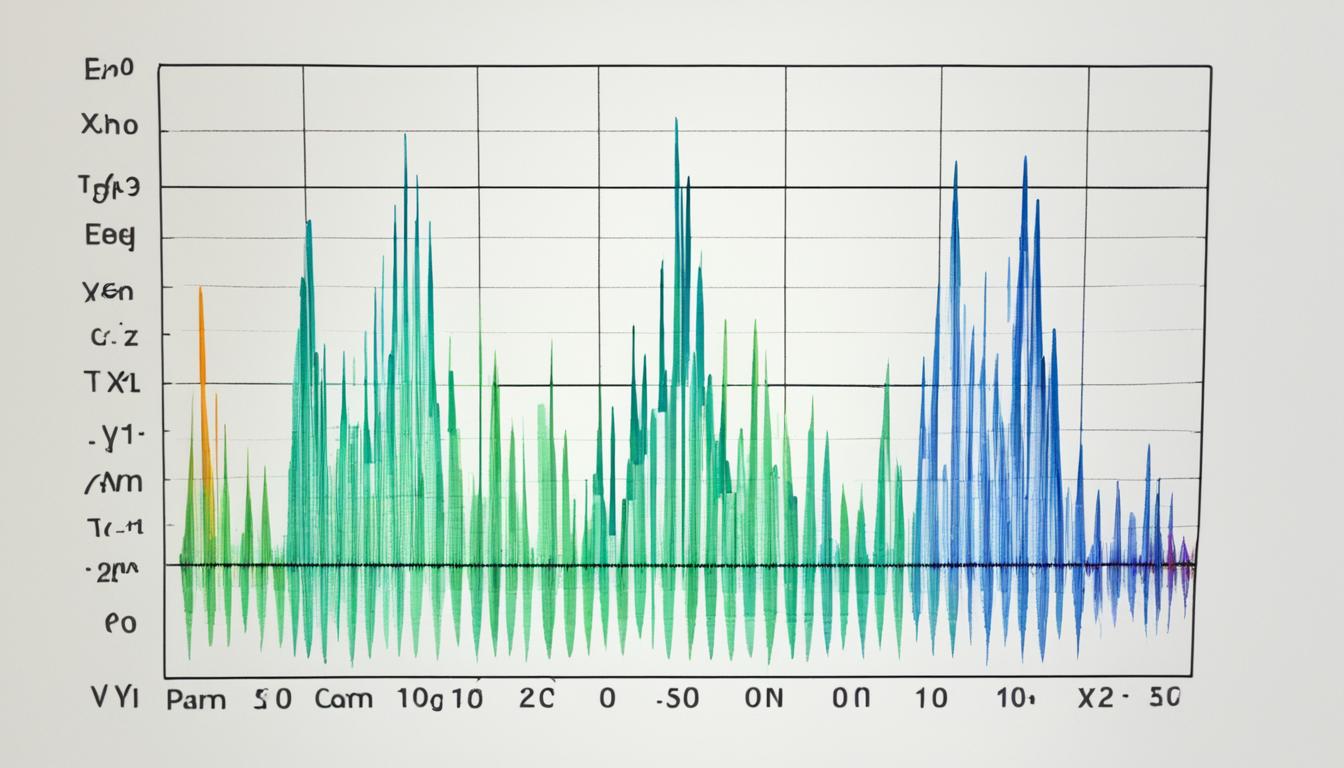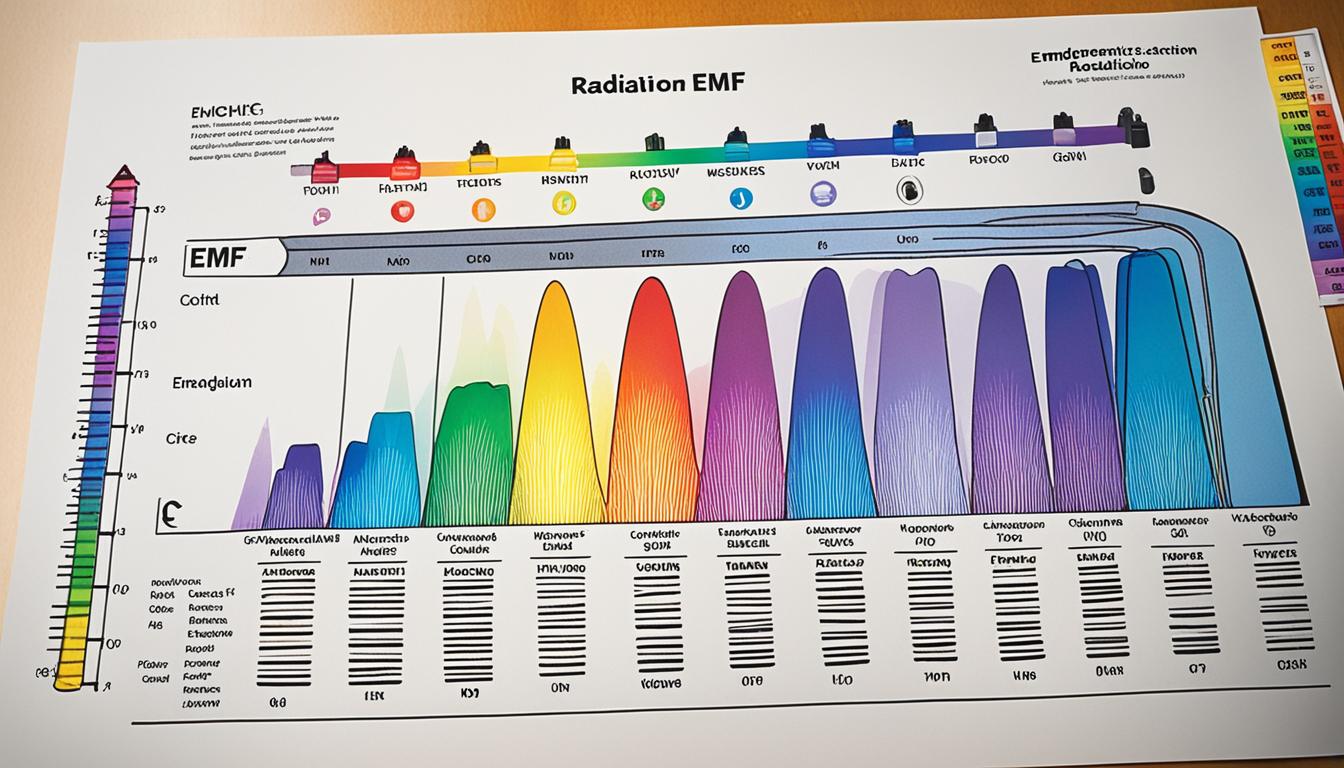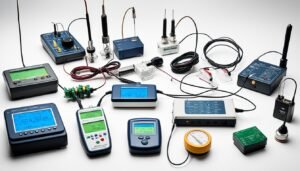Disclosure: This Post Contains Affiliate Links; We earn a commission on purchases.
Understanding electromagnetic field (EMF) readings is crucial when it comes to assessing potential health risks. EMF refers to the frequencies emitted by electronic devices and can be measured using portable handheld devices like the TriField TF2.
EMF encompasses a wide range of frequencies on the electromagnetic spectrum, including visible light, microwaves, and radio frequencies. While electronic devices emit radiation, the point at which these emissions become harmful is still a topic of debate.
Exposure to electromagnetic waves can affect tissue at the cellular level, leading to alterations in cell function and the transport of molecules. There are three main types of EMF readings: magnetic fields, electric fields, and radio frequencies.
Key Takeaways:
- EMF readings help assess potential health risks from electronic devices
- EMF encompasses a wide range of frequencies on the electromagnetic spectrum
- Exposure to electromagnetic waves can impact cellular function
- There are three main types of EMF readings: magnetic fields, electric fields, and radio frequencies
- Interpreting EMF readings can be challenging due to the lack of consensus on safe limits
How Radiation Affects the Body
Radiation consists of electromagnetic waves that have properties of both electricity and magnetism. It encompasses a wide range of frequencies and energies, each with its own unique effects on the human body. While some forms of radiation, such as visible light, are harmless and essential for our well-being, others, like x-rays and gamma rays, can be dangerous due to their ionizing nature.
Ionizing radiation has enough energy to remove tightly-bound electrons from atoms, leading to the formation of charged particles called ions. This process can damage cellular structures and genetic material, potentially causing harmful effects such as cancer and cell death.
Non-ionizing radiation, on the other hand, does not have enough energy to ionize atoms. This includes electromagnetic fields (EMF) emitted by electronic devices, such as microwaves, radio frequencies, and other similar forms of radiation that we encounter in our daily lives.
Initially, non-ionizing radiation was believed to be safe, as its energy levels were considered too low to cause significant harm. However, studies have shown that this type of radiation can still impact cellular functions and molecular transport within the body.
Electronic devices, like smartphones and Wi-Fi routers, emit non-ionizing radiation. While their emissions are much lower in energy compared to those of a microwave oven, they are still present in our environment and can interact with our bodies.
It’s important to note that the impact of non-ionizing radiation on human health is still a topic of ongoing research and debate among scientists and regulatory bodies.
How to Interpret EMF Readings
Interpreting EMF readings can be challenging. Without a universally accepted standard for determining what constitutes a “high” or “dangerous” reading, it’s important to rely on recommended guidelines and consider individual sensitivity and exposure patterns.
Residential Magnetic Field Exposure Limits
The International Commission on Non-Ionizing Radiation Protection (ICNIRP) recommends residential magnetic field exposure limits of 2,000 milligauss. However, the Bioinitiative report cautions that EMF levels much lower than 2,000 milligauss can still cause harm. The report suggests a safer threshold of below 1 milligauss for magnetic field exposure.
Electric Field and Radio Frequency Limits
For electric fields, the ideal limit is under 10 volts per meter. Radio frequencies should ideally be under 1 milliwatt per square meter. These limits help minimize potential health risks associated with high EMF exposure.
| EMF Reading | Recommended Exposure Limits |
|---|---|
| Magnetic Field | Residential: 2,000 milligauss Occupational: 10,000 milligauss |
| Electric Field | Under 10 volts per meter |
| Radio Frequency | Under 1 milliwatt per square meter |
While these recommended limits serve as useful starting points, it’s essential to consider your own sensitivity and exposure patterns. Some individuals may experience adverse effects at lower levels than those suggested, while others may have a higher tolerance. Monitoring and minimizing your EMF exposure can help create a safer living environment.
Remember, interpreting EMF readings requires balancing the available recommendations with individual factors. By staying informed and taking proactive steps to reduce EMF exposure, you can create a healthier, more mindful living space.
Understanding Magnetic Field Readings
Magnetic field readings play a crucial role in assessing the potential risks of electromagnetic field (EMF) exposure. By understanding and interpreting magnetic field readings, you can make informed decisions to protect yourself and create a healthier living environment.
Measuring magnetic field readings can be done using an EMF meter, such as the TriField TF2. These readings indicate the strength of the magnetic field in a specific location. However, determining what constitutes a high reading depends on the context and the guidelines provided by regulatory agencies and scientific studies.
The International Commission on Non-Ionizing Radiation Protection (ICNIRP) recommends exposure limits of 2,000 milligauss for residential settings. This indicates the maximum safe level of magnetic field exposure in a home environment. However, the Bioinitiative report, which summarizes the findings of numerous scientific studies, suggests that even lower levels, such as 1 milligauss or lower, can be safer.
Here is a table summarizing recommended magnetic field exposure limits:
| Exposure Setting | Recommended Limits |
|---|---|
| Residential | 2,000 milligauss (ICNIRP) 1 milligauss or lower (Bioinitiative report) |
| Occupational | 10,000 milligauss (ICNIRP) |
Ambient magnetic field readings in a modern home generally range from 0.1 milligauss to 1 milligauss. However, it’s important to note that readings near electronic devices, such as computers or power lines, can be much higher.
Reducing exposure to high magnetic field readings can be achieved by maintaining distances from radiation sources. For example, keeping a safe distance from electronic devices or positioning furniture away from power lines can help minimize exposure.
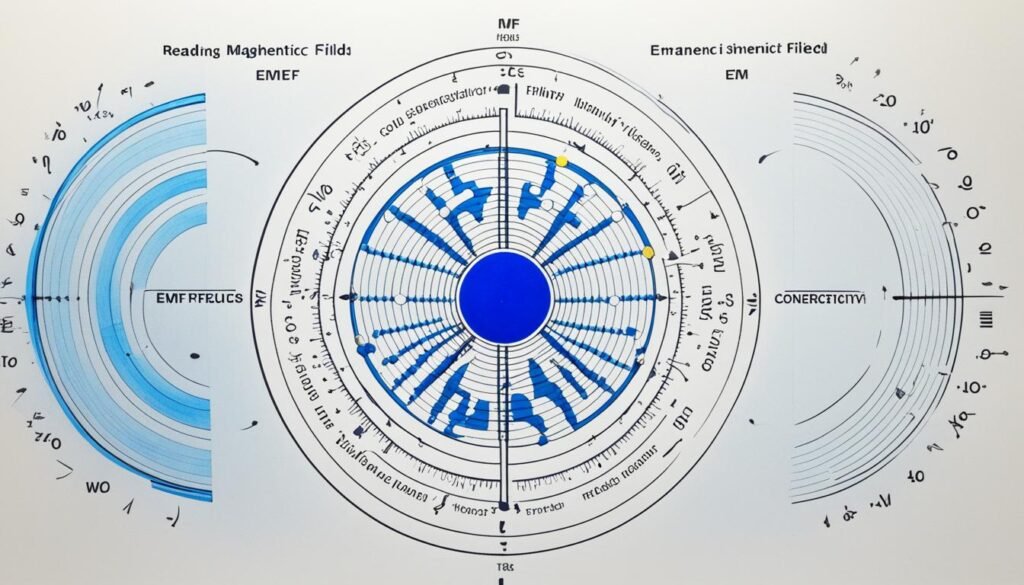
While ongoing debate surrounds the issue of safe magnetic field levels, understanding the potential risks and taking proactive steps to reduce exposure is recommended. By staying informed and implementing precautions, you can create a safer environment for yourself and your loved ones.
Decoding Electric Field Readings
Electric field readings are an often overlooked but crucial factor in interpreting EMF levels. While magnetic fields receive much attention, electric fields can also impact our health. Understanding safe electric field levels is essential for EMF exposure mitigation.
Different organizations provide varying recommendations for safe electric field levels. The German Building Biology Group advises that levels above 10 volts per meter should raise concerns. However, regulatory agencies like the International Commission on Non-Ionizing Radiation Protection (ICNIRP) have set much higher limits, ranging from 500 to 5000 volts per meter.
It’s important to note that electric field readings can fluctuate based on distance and proximity to electronic devices. Identifying the sources of electric field radiation in your environment and maintaining a safe distance can help reduce exposure. Regularly assessing electric field levels can ensure that you stay within safe limits.
Why Electric Field Readings Matter
While magnetic fields are commonly associated with potential health risks, electric fields can also impact our well-being. Electric fields are generated by electrical systems and appliances, and exposure to high electric field levels has been linked to adverse health effects.
“Electric field readings can provide valuable insights into the potential risks associated with EMF exposure. By understanding and managing electric field levels, we can take proactive steps to protect our health and well-being.”
The Importance of Mitigating Electric Field Exposure
Reducing electric field exposure is crucial to lower the potential health risks associated with EMF exposure. By implementing mitigation strategies, such as maintaining safe distances from electrical sources, using shielding products, and creating EMF-free zones in our homes, we can minimize our exposure to high electric field readings.
| ICNIRP Recommendations | German Building Biology Group Recommendations |
|---|---|
| 500-5000 volts per meter | Above 10 volts per meter |
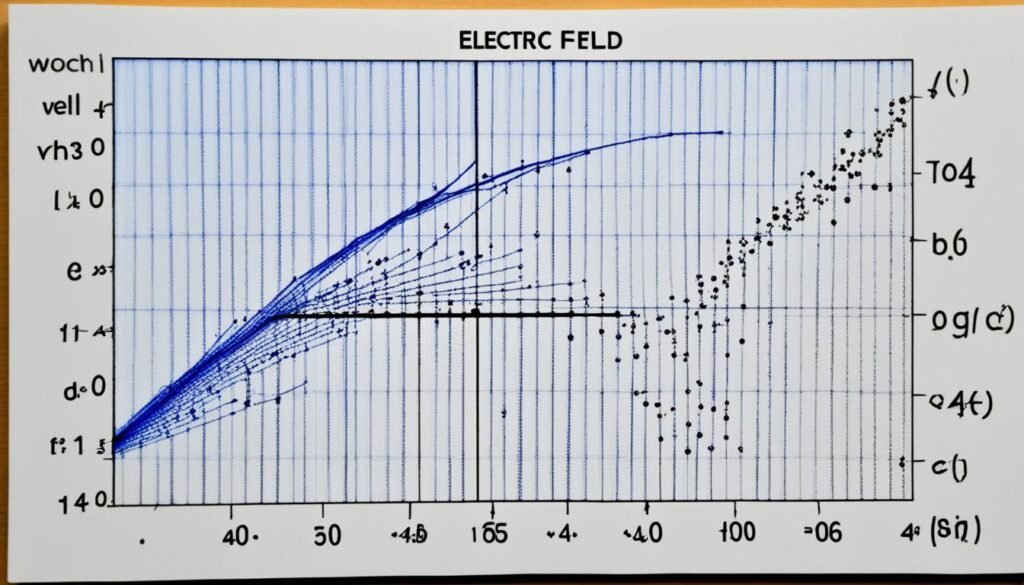
Conclusion
Interpreting EMF readings is crucial for understanding and managing potential health risks associated with electromagnetic frequencies. While there is no universally agreed-upon standard for determining safe EMF levels, the recommendations from the Bioinitiative report and scientific studies provide valuable guidelines.
To reduce EMF exposure, it is advisable to maintain magnetic field readings below 1 milligauss, electric field readings below 10 volts per meter, and radio frequency readings below 1 milliwatt per square meter. By being aware of these thresholds, you can take proactive steps to create a healthier living environment for you and your family.
To minimize EMF exposure, consider maintaining a safe distance from electronic devices, especially when they are in operation. You can also explore the use of shielding products, such as EMF blocking cases or covers for your electronic devices. Creating EMF-free zones in your home, where you limit the presence of electronic devices, can further reduce your exposure.
By understanding and interpreting EMF readings, you can make informed decisions about managing your EMF exposure. Remember, the goal is to strike a balance between enjoying the benefits of technology while minimizing potential health risks.
Source Links
- https://emfacademy.com/high-emf-readings/
- https://www.wavewallcases.com/what-is-a-high-emf-reading/
- https://www.orgoneenergy.org/blogs/news/what-is-a-high-emf-reading

Subscribe to Our Newsletter

